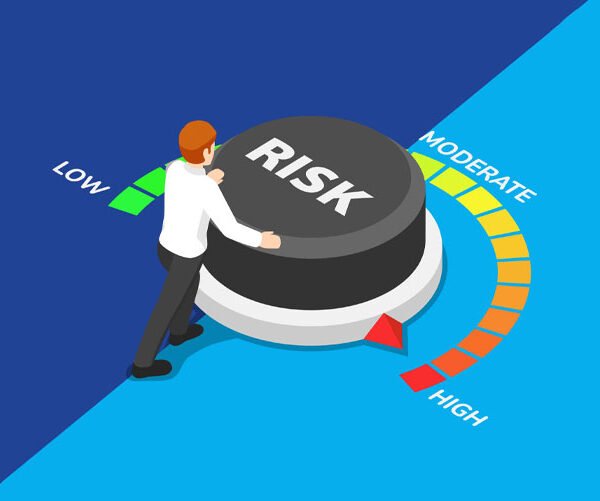The Future of Business – Trends to Watch in 2024
The business world is constantly evolving with new technologies, practices, and innovations shaping the landscape. As a business leader, staying up-to-date with the latest trends is crucial for remaining competitive and driving growth. In this article, we will explore some of the major trends that are poised to impact businesses in 2024 and beyond. Understanding these trends can help you make strategic decisions to future-proof your business.
Business trends refer to new advancements, practices, technologies or ideologies that emerge within an industry and have a meaningful impact. Adopting these trends at the right time can give businesses a competitive edge. On the flipside, failing to adapt can cause businesses to fall behind the curve.
With the world rapidly changing, it’s important now more than ever before for business leaders and entrepreneurs to keep a pulse on budding trends. Monitoring these trends allow you to leverage new opportunities, enhance operations, attract top talent, and get ahead of challenges before they arise.
This article will spotlight eight business trends ready to take enterprises by storm in 2024. We’ll explain what each trend entails, showcase real-world examples, and discuss the potential impact on the future of business. Let’s get started!
Generative AI
Artificial intelligence that can generate brand new content, designs, and other materials with little to no human input is dubbed generative AI. This technology saw major advancements in 2022 and is now poised to revolutionize businesses in 2024.
What is Generative AI?
Generative AI refers to machine learning models that can create completely original text, images, audio, video, and more from scratch. Unlike most AI which relies on analyzing existing data sets to derive insights, generative models can conjure up their own content.
Leading examples of generative AI include text generators like ChatGPT which can draft articles, emails, and code based on a prompt. There are also AI image generators like DALL-E 2 which create photorealistic pictures from text captions.
Generative AI runs on self-learning algorithms that intuit patterns from vast data sets on the human world. The AI then leverages its learnings to simulate human creativity. This allows generative models to invent materials humans would make themselves.
Real-World Business Uses
Generative AI delivers game-changing potential from content creation to product design and far beyond. Early adopters are already reveling huge productivity gains. Below are some real-world examples:
- Easy Content Creation: Instead of writing blog posts or social media captions from scratch, marketing teams can describe what they want and generative AI will create fully-formed drafts saving hours of work. Brands like UpViral and Seobility are using AI content creators like Jasper and Copy.ai to elevate their content marketing.
- Personalized Designs: Fashion and ecommerce outlets like Printful can use generative AI image makers to instantly create completely customized product mockups for each shopper based on individual preferences instead of limited premade templates. This delivers a bespoke experience that makes shoppers more likely to buy.
- Automated Help Desk: AI chatbot makers like Stellation are training generative models to fully manage customer service queries without any human agents. The AI can understand context and intent to resolve a vast array of issues from password resets, to product help, returns, and much more. This cuts overhead costs while offering 24/7 instant support.
The Future Impact
Early experiments display the astounding potential of generative AI. As the technology matures, wider adoption across enterprises is inevitable. Like most automation, generative AI will greatly eliminate repetitive tasks and allow human talent to focus on creative and strategic priorities.
With capabilities doubling every few months, generative AI might soon have the creative ability on par with top human experts in writing, design, and more. These AIs may work side-by-side with people to augment innovation. IDC predicts that 30% of enterprises will use generative AI to assist employees by 2025.
On the other hand, ethical challenges around plagiarism, bias, and misinformation exist. And advanced generative AI could disrupt many creative occupations. But careful regulation and training protocols are being established for responsible implementation.
Overall, enterprises worldwide are waking up to the enormous potential of generative AI in saving money, better understanding customers, creating hyper-personalized experiences, unlocking new products and knowledge, and liberating human creativity to reach new heights.
Sustainable Business Practices
With climate change accelerating, sustainability is no longer just a moral imperative for enterprises but a major driver of profitability. Research shows sustainable business practices like ethical sourcing, reducing carbon footprint, and promoting inclusion helps attract investor funding, top talent, customer loyalty and ultimately higher valuations.
What is Sustainable Business?
Sustainable business refers to strategies that allow companies to operate responsibly within social and environmental bounds to foster a livable world for future generations. This goes beyond limiting damage from operations and contributing to social causes when possible.
True sustainable businesses bake caring for people and planet into their core models. From sourcing to hiring to manufacturing to customer service, sustainability initiatives permeate all decisions big and small within these purpose-led companies.
Leading examples today include B Corps or benefit corporations legally bound to consider community and environmental impact alongside profit. Brands like Patagonia, Ben & Jerry’s, Danone, and Athleta carry B Corp certifications.
Real-World Examples
Research reveals how enterprises that instill an ethos of sustainability through their cultures, supply chains, policies, and innovations ultimately perform better financially in the long run. Let’s see some stellar examples:
- Sustainable Product Design: Apple consistently works to miniaturize devices, maximize recyclable materials, shift to clean energy in the supply chain, and improve product lifecycles. Consequently, they reduced carbon emissions by 40% even while revenue grew.
- Eco-Friendly Operations: IKEA plans for all home deliveries via electric vehicles by 2025 end-to-end. Plus 100% of IKEA’s wood is ethically sourced and 64% of store energy comes from renewables helping them target net-zero emissions by 2030.
- Inclusive Cultures: SAP curates mentoring, upskilling, and recruiting initiatives to improve minority representation which doubled from 2017 to 2020. Diverse leadership has allowed them to create software empowering social justice and sustainability for 400K customers.
- Sustainability Reports: PepsiCo achieved over $675M in savings over a decade by publicly reporting on sustainability. The transparency motivated reduced plastic usage, recycling improvements, and greener agriculture across operations. Regenerative practices also boosted farm yields.
The Future Impact
Consumer sentiment increasingly favors purposeful socially-conscious companies. A 2021 study revealed 71% of millennials are willing to pay more for sustainable offerings. And asset managers plan to quadruple sustainable investing to $150 billion by 2025.
With renewed attention from investors, customers, and top talent, sustainable business practices will likely dominate this decade. IDC predicts global spending on sustainability initiatives to grow at 17.5% yearly to ~$100 billion by 2025.
Proactive enterprises have the opportunity to build goodwill and higher profitability for years by ingraining sustainability today. Policy incentives around the globe like carbon taxes and clean energy subsidies will also accelerate sustainable transformations across lagging organizations to create positive change.
The Rise of Social Media Marketing
Once an optional small piece of the marketing mix, social media has grown into the critical lifeblood channel for brands in 2023. As adoption spreads further globally on established and emerging platforms, social media marketing warrants dedicated focus and resources for enterprises more than ever before.
Why Social Media Marketing Matters
There are 5 core reasons every brand must prioritize social media marketing today:
- Unrivaled Reach: 4.65 billion people were active on social media by October 2022 or 58.4% of the global population. This allows brands to engage audiences larger than any other channel.
- Targeted Ads: Platforms like Facebook and Instagram offer highly customized ad units based on interests and demographics for cost-efficient results.
- Brand Building: Creative and interactive content that entertains or inspires communities also raises brand visibility and affinity rapidly compared to disruptive ads.
- Real-Time Engagement: Social media allows brands to have meaningful conversations to foster relationships, gather feedback and respond to issues faster than anywhere else.
- Competition: As more industries realize social media’s importance, lack of investment risks brands losing visibility, relevance and market share compared to savvier players.
Clearly, dismissed social media as a vanity exercise is tremendously short-sighted today. It has become the marketplace where consumers and brands intersect constantly across the purchasing journey.
Successful Examples
The world’s biggest brands are leading the way with creative social media marketing driving measurable impact:
- Entertainment: Media powerhouse Disney frequently unveils new movies and shows through hugely popular Instagram and TikTok accounts generating intense anticipation before release. Encanto’s views of related TikToks reached 42 billion!
- Hospitality: Marriot International boosted social media spending by 5x between 2020-2021. Efforts like #MarriotBonvoy saw 25K+ mentions quickly expanding visibility plus a 3.6 point gain in brand consideration surveys.
- QSR: Wendy’s quirky and conversational social media presence sets it apart with 22.7 million followers and 19 billion views just on TikTok in 2022. Leveraging trends and humor helped December 2022 sales jump 17% YoY despite inflation.
- Technology: Microsoft regularly spotlights how diverse customers innovate using their solutions on Instagram and LinkedIn to highlight real-world value driving lead gen and conversions.
These examples confirm that social media has evolved into the platform where brands must establish and nurture their identities through creative engagement or risk eroding appeal.
The Future Impact
eMarketer predicts social media ad spends will overtake TV for the first time ever in 2023 signaling dominance through the rest of the decade. And Forrester anticipates even B2B brands will dedicate over 50% of media budgets to social initiatives by 2025.
In many ways, social media marketing has moved from a novel experiment to an urgent necessity almost overnight with no signs of slowing. The platforms and formats will certainly continue evolving rapidly but establishing a thoughtful and consistent social presence now is vital for enduring enterprises.
The E-Commerce Boom
While e-commerce has transformed retail for over two decades now, the sheer scope of disruption still continues to accelerate at staggering rates. In 2023, enterprises without robust e-commerce models risk losing relevancy and revenues permanently.
The State of E-Commerce
E-commerce refers to selling goods directly to consumers via online channels instead of physical stores. After steadily rising for years, the global e-commerce market exploded during the pandemic forcing even the most hesitant buyers online.
Today, e-commerce accounts for over 20% total global retail sales compared to just 16% in 2019. Revenues soared from $3.35 trillion to over $5 trillion in two years. And analysts expect online retail to hit an astounding $7.3 trillion with 7 billion consumers by 2025!
Clearly, digital shopping achieved mass adoption through the pandemic that will not recede anytime soon. E-commerce demolished notions of being a niche segment making an omni-channel presence urgent for enterprises today.
Successful Adaptations
Incumbents and startups across categories moved swiftly to upgrade e-commerce capabilities in recent years yielding big dividends:
- Apparel: Nike saw online sales leap 36% YoY offsetting declining physical retail through 2021 and 2022 by leveraging try-on tech, diverse payment options and smoother fulfilment reducing delays.
- Banks: Spanish banking giant BBVA transitioned millions of customers towards user-friendly digital accounts, payment tools and shopping portals resulting in an impressive 86% conversion on those using the mobile apps.
- MedTech: Philips fast-tracked e-commerce rollouts in 2020 across dozens of global markets allowing continued consumer access to healthcare devices amid lockdowns via intuitive digital storefronts and remote support.
- Sports: The NFL launched dedicated team e-stores along with NFT collectibles and metaverse activations before 2021 generating over $200 million in online revenues quickly emerging as a new profit engine.
The digital shopping wave is clearly here for the long run creating do-or-die urgency for brands to embrace e-commerce at scale or risk fading relevance.
The Future Impact
Emerging innovations like virtual reality stores on platforms like Shopify, advanced AR try-ons, livestream selling, connected fitness hardware, and automating supply chains will only expand e-commerce possibilities.
Prescient brands are future-proofing for the next level of disruption by consolidating nimble tech stacks prepared for digital-first models and connected shopping experiences.
IDC forecasts digital retail penetration reaching 25% across all categories by 2027 signaling mid-sized enterprises still have room for massive growth by moving online aggressively right now. Building loyal digital customer bases will separate category leaders this decade.
Fostering Educational Partnerships
The rapid pace of technological and cultural shifts make finding qualified talent who can pull weight from day one exceptionally hard. This led pioneering enterprises to foster deep partnerships with educational institutions to mold curriculum and tools to create industry-ready graduates.
The Need for Better Prepared Talent
The World Economic Forum estimates automation and AI will radically morph 50% of workplace skills in under five years. Meanwhile educational systems evolve much slower.
This means fresh graduates enter workplaces with general theoretical knowledge but lack the technical abilities and contextual soft skills crucial for impact without tons of training.
Closing this skills deficit that ultimately hurts budgets and progress requires a trust-based nexus between enterprises and academia.
Successful Collaborations
Many leaders have proactively formed strategic relationships with schools, universities, offline bootcamps and online training platforms to customize dynamic curriculums that distribute talent with day one competencies:
- Ernst & Young: EY Nextwave is a platform that allows academics to access training in emerging technologies like blockchain, AI governance and cybersecurity for free to teach upgraded skills. Over 220 US institutions uses Nextwave enriching business, law and tech courses.
- JPMorgan Chase: The firm launched a Technology Apprenticeship Program in Houston where specially chosen university seniors take a six month intensive course in current programming tools, cloud infrastructure and other essentials before launching fintech careers.
- Walmart: Through the Walmart Academies program, students and teachers gain free access to specialized instructional videos and simulations around retail fundamentals encompassing store operations, merchandising, e-commerce duties and leadership strategies required for manager trainees. Over 250K workers have graduated already.
Targeted educational alliances allow enterprises to directly develop skilled candidates matched to evolving requirements while learners gain updated knowledge to excel. Investing here addresses existing talent shortages.
The Future Impact
Partnerships with educators only offer more mutual value over time as companies convey exactly which capabilities they need and curators can dynamically tune programs to output graduates strapped with demanded skills.
Indeed published research indicating over 90% of executives already believe deeper academia and industry coordination is vital for economic growth and continued innovation.
As automation spreads, adaptability and having workers able handle emerging technologies grows crucial. Joint programs ensure students enter the workforce ready for contemporary roles and management tracks keeping talent pipelines robust.
The Necessity of Financial Preparedness
Between uncertain global conditions like recovering from COVID, supply chain turmoil and the Ukraine invasion exacerbating inflation, enterprises must prioritize financial planning and caution more than ever to thrive through unpredictable terrain.
Challenges Abound
The BMO 2023 Economic Outlook report forecasts the US economy slipping into mild recession by Q2 2023 as the Fed bumps rates higher to slow inflation. Meanwhile geopolitical conflicts threaten energy supplies further spiking costs.
For enterprises, the mix of sluggish consumer sentiment, pricier borrowing costs and operations make budget discipline mandatory:
- Reduced Disposable Incomes: Households have pulled back spending on non-essential items as salaries fail to match inflation shrinking revenues for many consumer enterprises.
- Higher Interest Charges: Businesses must account for steeper financing fees from banks as central banks globally increased rates to control inflation limiting investment abilities.
- Global Uncertainty: With China’s real estate bubble bursting, climate events growing extreme and wars raging, external volatility makes modelling cash flows and growth highly uncertain.
Firms worldwide thus need reinforced financial planning more than ever before through the rocky terrain ahead.
Real-World Examples
The world’s savviest CEOs have responded rapidly to enhance liquidity, control costs and de-risk operations through financial prudence:
- Walmart: Despite inflation hitting five decade highs in 2022 , Walmart avoided price hikes through masterful supply chain management and sourcing optimizations to protect profit margins while gaining market share over retailers that did raise prices.
- Samsung: The tech giant cut costs aggressively across units, limited hiring and raised device prices to deliver a 31% jump in 2022 profits while competitors suffered from production delays and parts shortages.
- Airbnb: Believing a recession lurks ahead, Airbnb CEO Brian Chesky asked managers to identify the highest impact yet costliest projects that could be cut if needed to protect over $10 billion in cash reserves.
Savings pools, modelling for uncertainty and disciplined operations prepare enterprises to navigate unpredictable conditions.
The Future Impact
With higher recession odds, interest rates, geopolitical tensions and market chaos, building financial resilience offers the only reliable defense enterprises have. Companies worldwide are responding by limiting discretionary expenses, securing credit lines, optimizing inventories and bracing for stormy conditions into 2024.
Prioritizing liquidity and modelling pessimistic scenarios allow firms to pursue opportunities that arise during downturns stronger than distressed peers. Investing in financial preparedness ultimately enables enterprises to master chaotic periods through discipline.
Evolving Mentorship Programs
Structured mentorship initiatives that pair experienced professionals with promising proteges have long been vital talent development programs within enterprises. But modernizing such initiatives using behavioral models tailored for rising young talent promises superior engagement and growth.
Understanding Gen-Z Mindsets
Gen-Z refers to the demographic born between 1997 and 2012, meaning the oldest members are just 26 while youngsters are still in school. But this generation already represents 30% of the global workforce making recruiting and retaining Gen-Z essential.
However, Gen-Z grew up in a vastly different paradigm than previous generations shaped by smartphones, social media, online communities and constant digital bombardment.
These unique experiences made Gen-Z wholly technology-native having used tools like smartphones and laptops since toddlerhood. They are also far more participative wanting to shape solutions rather than be handed instructions. Additionally, Gen-Z cares deeply about self-actualization beyond work.
Understanding these core traits allows remodeling stale mentorship tactics for maximum appeal. Gen-Z respond better to guides who are more collaborative friends than top-down advisors. Similarly training programs rooted in real-world problem-solving and community-building foster stronger engagement.
Successful Examples
Many enterprises are already reimagining mentorship by listening to young hires and building initiatives that speak to Gen-Z needs:
- Goldman Sachs: The Wall Street icon launched an app allowing new recruits to pick current executives as mentors. The platform enables booking casual coffee chats or sending questions anytime outside formal check-ins creating relaxed bonds. It saw 95% adoption within a few months.
- Unilever: Younger hires crave purpose and change which the CPG giant enables through LaunchoftheUnknown.com connecting talent to sustainability projects from marketing to supply chain. Participants gain global peer mentor circles foraging solutions. Over 52% of users feel more empowered in roles.
- CapitalOne: The financier created a TikTok program for associates to become influencers. Participants get training in content strategies and colleague coaches for support. The credit card maker gets valuable insights into Gen-Z attitudes while young hires build modern skillsets.
Reimagining traditional mentorship programs to foster community, accessibility, fluid learning and creative challenges provide better development paths for young talent leading to happier and more productive workforces.
The Future Impact
A Gartner survey found nearly 70% of Gen-Z workers expect to stay at companies under two years unless they feel engaged and supported. That puts the onus on leaders to motivate young professionals.
Adapting mentorship schemes to promote inclusion, self-growth and meaningful problem-solving delivers exactly the environment Gen-Z desires for sustained commitment. When people feel invested in an organization’s purpose, retention and satisfaction rise according to McKinsey research.
With Gen-Z just beginning their professional journeys, taking timely steps to align advancement programs to their preferences promises major dividends now and long-term by nurturing leadership talent and loyalty.
Comparison of Business Trends
Each business trend highlighted so far promises tremendous potential to shape enterprises and industries over the coming years. But pursuing every emerging shift at once can spread resources too thin. So let’s compare the upsides and adoption considerations that leaders should weigh before moving forward.
Factors to Consider
When evaluating revolutionary trends, ask these questions:
- Infrastructure Needs: Will existing technology architecture handle implementing this or require costly overhauls immediately? What are the hardware and software upgrade costs?
- Current Skills: Does the team have the essential expertise in-house necessary for adoption or will intensive retraining or hiring be mandatory?
- Legal Hurdles: Are there regulatory challenges around data privacy, bias or safety that require legal input before activation?
- Cultural Readiness: How aligned is this with company values and purpose? Will employees and executives welcome or resist the change?
- Competitor Landscape: Have rivals embraced this trend with success or does being an early adopter provide competitive advantage?
Weighing these elements determines the real organizational readiness for transformative ideas and which require more groundwork first.
| Trend | Infrastructure Needs | In-House Skills | Legal Hurdles | Cultural Readiness | Competitive Edge |
|---|---|---|---|---|---|
| Generative AI | High – Cloud data, dedicated hardware | Low – Requires developer hiring/training | High – Bias, plagiarism concerns | Moderate – Automating creative roles can frustrate talent | High – Only 3% have adopted so far |
| Sustainable Operations | Low – Mostly policy changes | High – Supply chain, product and procurement reskilling critical | Low | High – Aligns with purpose-driven culture | Moderate – Sector dependent |
| Social Media Marketing | Low – Leverage common platforms | Moderate – Creative and analytical hires | Low | High – Reaches customers directly | Low – Nearly universal adoption |
| E-Commerce Channels | High – Requires new technical architecture | Moderate – Logistics and marketing reskilling | Moderate – Sales tax, data protection | High – Omnichannel is mainstream now | Low – Over 90% of retailers support e-commerce |
| Education Partnerships | Low – Negotiating programs is simple enough | Low | Low | High – Improves recruitment pipelines | Moderate – Only larger enterprises have mushroomed programs so far |
| Financial Preparedness | Low – Policy decisions on cost optimization goals | Moderate – Accounting skill upgrades | Low | High – Leadership supports fiscal prudence always | Moderate – Situationally dependent |
| Gen-Z Mentorship Models | Low – Programs require organizational change mostly | Low | Low | High – Younger workers will welcome gladly | High – Only early experiments exist leaving space for ideas |
As the grid summarizes, initiatives like sustainability, social media usage, e-commerce, and financial vigilance deliver broad advantages with fewer hurdles currently making them strategic smart bets for most. Still generative AI and reimagined mentorship programs hold tremendous potential for leaders ready to invest in infrastructure and skills development for those still novel concepts.
Legal and Regulatory Considerations
While exciting innovations certainly capture attention, real-world adoption necessitates examining legal compliance and regulatory standards early. Initiatives around data usage, emerging technologies and global connections warrant particular caution currently across most jurisdictions.
Key Issues
Major concerns include rules evolving due to:
- Data Protection: Generative AI and digital retail heavily rely on gathering and processing user data raising privacy infringement risks if not anonymized properly according to expanding regulations.
- Automation Disruption: Advanced generative AI looks to wholly replace certain human roles soon demanding updated workforce and redundancy protections.
- Environmental Guidelines: Carbon emission norms proposed in major economies like the EU penalize overseas suppliers that lack transparent sustainability auditing mechanisms compared to local vendors.
- Trade Barriers: Escalating US-China trade sanctions threaten higher tariffs or supply chain blocks especially for technology and manufacturing firms necessitating backup production plans.
Along with these external considerations, outdated internal policies around remote work, use of personal devices, social media engagement and data ownership need revamping too for distributed digital-first business environments.
Staying compliant necessitates tracking evolving legislation worldwide relevant for your operations and connections.
Real-World Strategies
Established global enterprises navigate regulations using:
- Automated Compliance Monitoring: Tools like Compliance.ai and ComplyScore scan regulatory databases daily across jurisdictions alerting teams about updated laws relevant for overseas subsidiaries and supply chains.
- Consolidated Policies: Instead of disjointed frameworks, unified companywide data protection or device usage rulebooks based on the most stringent requirements known help sustain consistency legally.
- Proactive Geo-Analysis: Analytics modeling by solutions like Bain GeoDynamics tracks leading indicators predicting likely trade barriers allowing enterprises to assess secondary supplier options before disruptions hit.
- Responsive IT Architectures: Transitioning monolithic platforms to flexible microservice-driven technology stacks allows efficiently replacing unstable vendors, adapting data localization needs and scaling processes to navigate external volatility.
Updating processes proactively and monitoring regulatory shifts is crucial for smoothly adapting complex operations to global challenges ahead.
While exciting innovations hold tremendous potential, real-world adoption necessitates examining legal compliance and regulatory standards early. Initiatives around data usage, emerging technologies and global connections warrant particular caution currently across most jurisdictions.
How to Stay Ahead of Business Trends
In an ever-evolving marketplace, sticking to comfortable models usually spells doom as nimbler disruptors unleash creative solutions redefining categories overnight. Enterprises seeking durable success must make trend analysis core to strategy.
Best Practices
Here are crucial habits for always keeping a pulse on the next big shifts:
- Train Innovation Scouts: Charge forward-thinking employees to constantly explore fringe technologies, consume startup and VC news, scout patents and pitch revolutionary concepts.
- Define Target Outcomes: Outline goals to become smarter about things like customer acquisition costs, production efficiency metrics and support query types to ground explorations.
- Crowdsource Perspectives: Regular brainstorming sessions for leaders and frontline staff from diverse operations to contribute trends they see and ideas to leverage them yield rich insights.
- Research Multiple Industries: Study category innovations beyond your own for inspiration like automakers evaluating fintech payment tools and medical providers examining precision retail operations.
- Prototype Relentlessly: Using simulations and MVP tests to experiment with cutting-edge tactics for emerging platforms verifies viability for customers allowing quick pivots.
- Network With Startups: Conferences, hackathons and accelerators that connect incumbents with young disruptive ventures open valuable viewpoints on burgeoning shifts.
- Incentivize Tech Skills: Implement coding bootcamp memberships, hackathon Fridays and digital training budgets to motivate employees continuously developing relevant skills.
Making trend analysis a collaborative duty across the org rather than just relying on market researchers allows pulling insights from wider inputs for fuller visibility.
Unique Startup Considerations
Despite limited resources, small businesses and startups must stay just as vigilant tracking paradigm shifts that may demand swift pivots or risk overnight irrelevancy amid rapidly evolving user needs.
Lean operators can cost-efficiently monitor trends through:
- Setting Google News Alerts: Free automated notifications around chosen keywords deliver daily industry updates to inboxes without dedicated analysts.
- Using Online Survey Tools: Easy DIY platforms like Proof or Typeform to run one-question mini-surveys with existing users and interested prospects testing new concepts.
- Evaluating Web Traffic Tools: Solutions like Alexa.com and Ubersuggest offering free competitor website analytics help compare feature adoption and performance.
- Reading VC Reports: Subscription considerers like CB Insights or The Information provide trend analysis on funding patterns predicting rising sub-segments.
- Attending Virtual Conferences: Digital event passes cost far less than physical trips allowing more startup employees to absorb sessions from industries beyond yours.
- Joining Founder Forums: Local meetup groups and networks like YEC allow casual access to fellow entrepreneurs eager to discuss ideas and struggles around turbulent times.
Through scrappier tactics, early-stage outfits can also stay tuned to relevant shifts outpacing legacy players.
Conclusion
Modern business moves blazingly fast necessitating awareness of technological and social changes continuously reframing customer expectations, operational parameters, collaboration models and ethical obligations for enterprises.
While generative AI, sustainability measures, social media marketing, e-commerce platforms, private-public partnerships, financial safeguards and reimagined mentorship programs for young talent dominate current discussions — brand new trends perpetually appear over the horizon promising creative disruption.
Leaders who actively monitor fringe innovation signals through market research and networked listening posts — while fostering nimble cultures ready to test bold ideas — will sustain relevance amid volatile times by converting trends into sustainable competitive advantage before rivals.
Prioritizing agility and vigilance promises opportunities for true market differentiation as pioneers despite turbulence ahead. The future favors the bold.











